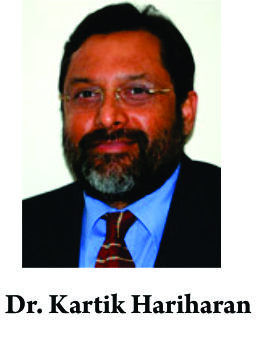Joseph Tracey, Selene G. Parekh
Volume 3 | Issue 2 | May – Aug 2018 | Page 9-12
Author: Joseph Tracey, Selene G. Parekh [2].
[1] Medical University of South Carolina 96 Johnathan Lucas St., Charleston, SC, 29425
[2] Duke University Medical Center, Orthopaedic Surgery North Carolina Orthopaedic Clinic 3609 Southwest Durham Drive Durham, NC, USA 27707
Address of Correspondence
Dr. Selene G. Parekh,
Medical University of South Carolina 96 Johnathan Lucas St., Charleston, SC, 29425 tracey312@live.com
Email: selene.parekh@gmail.com
Abstract
Ankle arthroscopy has evolved rapidly within the last twenty-five years and is now the principal method of treatment of ankle disorders. It would be prudent for an aspiring orthopaedic surgeon to include this technique in his or her armamentarium of surgical techniques. This will provide the surgeon an inclusive option to obtain accurate diagnosis and to discuss management options with the patient. The minimally invasive technique is biologically friendly by preserving the soft tissue envelope. This will also meet patient expectations to achieve an earlier and predictable functional recovery from ankle pathology. This review article will briefly mention historical aspects and outline the basic technique and relevant benefits of ankle arthroscopy. Indications and contra-indications of ankle arthroscopy will be discussed with pertinent review of literature. Complications and outcomes of the procedure will also be highlighted.
Keywords: Ankle arthroscopy, technique, indications
References
1. van Dijk CN, Scholten PE, Krips R. A 2-portal endoscopic approach for diagnosis and treatment of posterior ankle pathology. Arthroscopy: The Journal of Arthroscopic & Related Surgery. 2000 Nov 1;16(8):871-6.
2. Abramowitz Y, Wollstein R, Barzilay Y, London E, Matan Y, Shabat S, Nyska M. Outcome of resection of a symptomatic os trigonum. JBJS. 2003 Jun 1;85(6):1051-7.
3. Marotta JJ, Micheli LJ. Os trigonum impingement in dancers. The American journal of sports medicine. 1992 Sep;20(5):533-6.
4. Willits K, Sonneveld H, Amendola A, Giffin JR, Griffin S, Fowler PJ. Outcome of posterior ankle arthroscopy for hindfoot impingement. Arthroscopy: The Journal of Arthroscopic & Related Surgery. 2008 Feb 1;24(2):196-202.
5. Nickisch F, Barg A, Saltzman CL, Beals TC, Bonasia DE, Phisitkul P, Femino JE, Amendola A. Postoperative complications of posterior ankle and hindfoot arthroscopy. JBJS. 2012 Mar 7;94(5):439-46.
6. Lijoi F, Lughi M, Baccarani G. Posterior arthroscopic approach to the ankle. Arthroscopy. 2003 Jan 1;19(1):62-7.
7. Sitler DF, Amendola A, Bailey CS, Thain LM, Spouge A. Posterior ankle arthroscopy: an anatomic study. JBJS. 2002 May 1;84(5):763-9.
8. d’Hooghe PP, van Dijk CN. Hindfoot Endoscopy for Posterior Ankle Impingement. InArthroscopy 2016 (pp. 1067-1077). Springer, Berlin, Heidelberg.
9. Balcı Hİ, Polat G, Dikmen G, Atalar A, Kapıcıoğlu M, Aşık M. Safety of posterior ankle arthroscopy portals in different ankle positions: a cadaveric study. Knee Surgery, Sports Traumatology, Arthroscopy. 2016 Jul 1;24(7):2119-23.
10. Urguden M, Cevikol C, Dabak TK, Karaali K, Aydin AT, Apaydin A. Effect of jointmotion on safety of portals in posterior ankle arthroscopy. Arthroscopy 25:1442–1446, 2009.
11. Van Dijk CN, De Leeuw PA, Scholten PE. Hindfoot endoscopy for posterior ankle impingement: surgical technique. JBJS. 2009 Oct 1;91(Supplement_2):287-98.
12. Tonogai I, Hayashi F, Tsuruo Y, Sairyo K. Anatomic Study of Anterior and Posterior Ankle Portal Sites for Ankle Arthroscopy in Plantarflexion and Dorsiflexion: A Cadaveric Study in the Japanese Population. The Journal of Foot and Ankle Surgery. 2018 May 1;57(3):537-42.
13. Spennacchio P, Cucchi D, Randelli PS, et al. Evidence-based indications for hindfoot endoscopy. Knee Surg Sports TraumatolArthrosc2016;24:1386–95.
14. Van Dijk CN, Vuurberg G, Batista J, d’Hooghe P. Posterior ankle arthroscopy: current state of the art. Journal of ISAKOS: Joint Disorders &Orthopaedic Sports Medicine. 2017 Aug 7:jisakos-2016.
15. van Dijk CN, van Bergen CJ. Advancements in ankle arthroscopy. J Am AcadOrthopSurg2008;16:635–46.
16. van Dijk CN. Hindfoot endoscopy. Foot Ankle Clin2006;11:391–414.
17. Ogut T, Ayhan E, Irgit K, et al. Endoscopic treatment of posterior ankle pain. Knee Surg Sports TraumatolArthrosc2011;19:1355–61.
18. van Dijk CN. Hindfoot endoscopy for posterior ankle pain. Instr Course Lect2006;55:545–54.
19. Smyth NA, Murawski CD, Levine DS, Kennedy JG. Hindfoot arthroscopic surgery for posterior ankle impingement: a systematic surgical approach and case series. The American journal of sports medicine. 2013 Aug;41(8):1869-76.
20. Golanò P, Mariani PP, Rodríguez-Niedenfuhr M, Mariani PF, Ruano-Gil D. Arthroscopic anatomy of the posterior ankle ligaments.Arthroscopy. 2002;18:353-8.
21. Beimers L, de Leeuw PAJ, van Dijk CN. A 3-portal approach for arthroscopic subtalar arthrodesis. Knee Surgery, Sports Traumatology, Arthroscopy. 2009;17(7):830-834.
22. Lee KB, Saltzman CL, Suh JS, Wasserman L, Amendola A. A posterior 3-portal arthroscopic approach for isolated subtalar arthrodesis. Arthroscopy: The Journal of Arthroscopic & Related Surgery. 2008 Nov 1;24(11):1306-10.
| How to Cite this article: Tracey J, Parekh S G. Modern Concept in Posterior Ankle Arthroscopy. Asian Journal of Arthroscopy May-Aug 2018;3(2): 9-12. |




